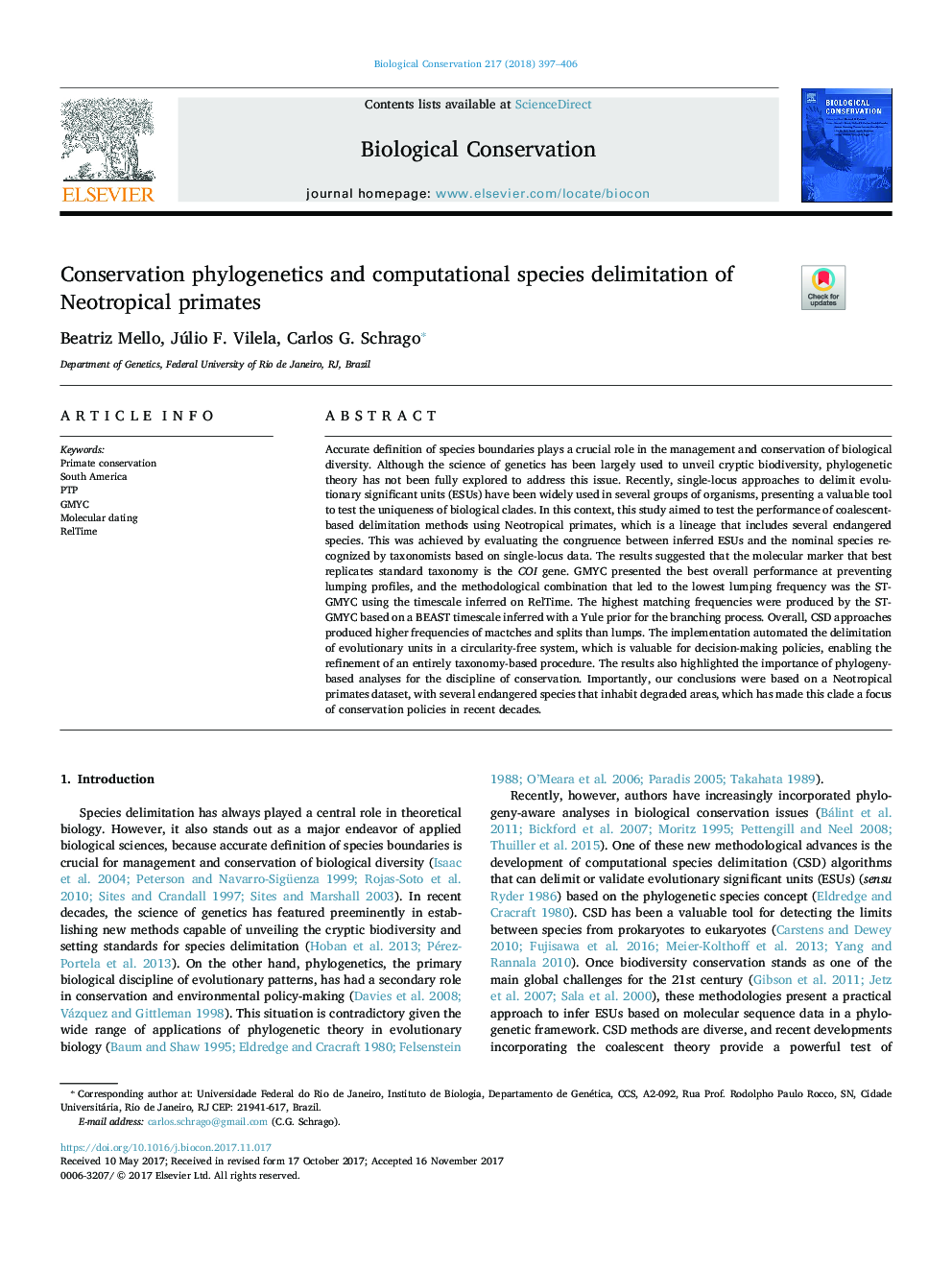| Article ID | Journal | Published Year | Pages | File Type |
|---|---|---|---|---|
| 8847623 | Biological Conservation | 2018 | 10 Pages |
Abstract
Accurate definition of species boundaries plays a crucial role in the management and conservation of biological diversity. Although the science of genetics has been largely used to unveil cryptic biodiversity, phylogenetic theory has not been fully explored to address this issue. Recently, single-locus approaches to delimit evolutionary significant units (ESUs) have been widely used in several groups of organisms, presenting a valuable tool to test the uniqueness of biological clades. In this context, this study aimed to test the performance of coalescent-based delimitation methods using Neotropical primates, which is a lineage that includes several endangered species. This was achieved by evaluating the congruence between inferred ESUs and the nominal species recognized by taxonomists based on single-locus data. The results suggested that the molecular marker that best replicates standard taxonomy is the COI gene. GMYC presented the best overall performance at preventing lumping profiles, and the methodological combination that led to the lowest lumping frequency was the ST-GMYC using the timescale inferred on RelTime. The highest matching frequencies were produced by the ST-GMYC based on a BEAST timescale inferred with a Yule prior for the branching process. Overall, CSD approaches produced higher frequencies of mactches and splits than lumps. The implementation automated the delimitation of evolutionary units in a circularity-free system, which is valuable for decision-making policies, enabling the refinement of an entirely taxonomy-based procedure. The results also highlighted the importance of phylogeny-based analyses for the discipline of conservation. Importantly, our conclusions were based on a Neotropical primates dataset, with several endangered species that inhabit degraded areas, which has made this clade a focus of conservation policies in recent decades.
Related Topics
Life Sciences
Agricultural and Biological Sciences
Ecology, Evolution, Behavior and Systematics
Authors
Beatriz Mello, Júlio F. Vilela, Carlos G. Schrago,
